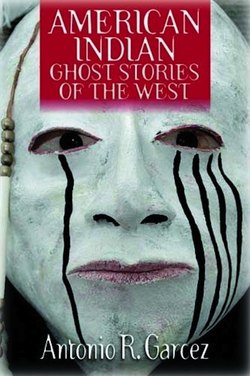Читать книгу American Indian Ghost Stories of the West - Antonio Sr. Garcez - Страница 22
На сайте Литреса книга снята с продажи.
Hopi
Оглавление(Hopituh)
The Hopi reservation lies within the larger Navajo reservation in the northeast quadrant of Arizona. The nearest town of Tuba City is located to the west while the largest city of Flagstaff is located to the southwest. The Hopi area itself is quite isolated by many miles of desert and canyons. Highway 264 provides the major access to and from the reservation. When mentioning the Hopi or Hopituh nation, it is difficult not to focus on such essential elements as farming and gardening. Existing and thriving in a desert environment is testament to the adaptive ability of these unique and deeply spiritual people. Hopi can trace their physical ancestral birth to their homeland as being approximately 1200 and earlier. Archaeologically, garden terraces at Third Mesa or Bacavi prove this. Farming methods used in times past are still in use to this day. Examples are the ingenious use of gardens located on mesa walls, which are irrigated terraces that are water fed by the villages located above.
Another method is “dry farming.” This technique involves the planting of seed within arroyos (washes) and valleys located on the lower plateaus where seasonal rain produces the moisture necessary for their germination and growth.
The Hopi cosmology is composed of four worlds, or “ways of life.” At the present time, the Hopi believe that they are in the fourth way. As they moved from the third way to the forth way, they and other people were offered corn by the creator, or Ma’saw. Aside from the Hopi, all the other people eagerly and boldly took the largest of the corn that was offered. The Hopi in turn were left with the shortest and smallest blue corn. The Hopi immediately knew that this was symbolic of their life to come, as it too would be short and difficult. Thus, their response was to manifest the virtues of cooperation, humility and respect among themselves and others. They also knew that the earth was a wonderful and giving, living spirit and its healthiness would depend on the Hopi people as its caretakers.
Today the Hopi live in four separate and autonomous mesas or villages, and within each village are sub-communities. First Mesa includes Waalpi (Walpi), Hanoki (Hano or Tewa), and Sitsomovi (Sichomovi). Second Mesa includes: Songoopavi (Shongopavi), Musungnuvi (Mishongnovi) and Supawlavi (Shipaulovi). Third Mesa includes Hoatvela (Hotevilla), Paaqavi (Bacavi), Munqapi (Moencopi), Kiqotsmovi (Kykotsmovi), and Orayvi (Oraibi).
